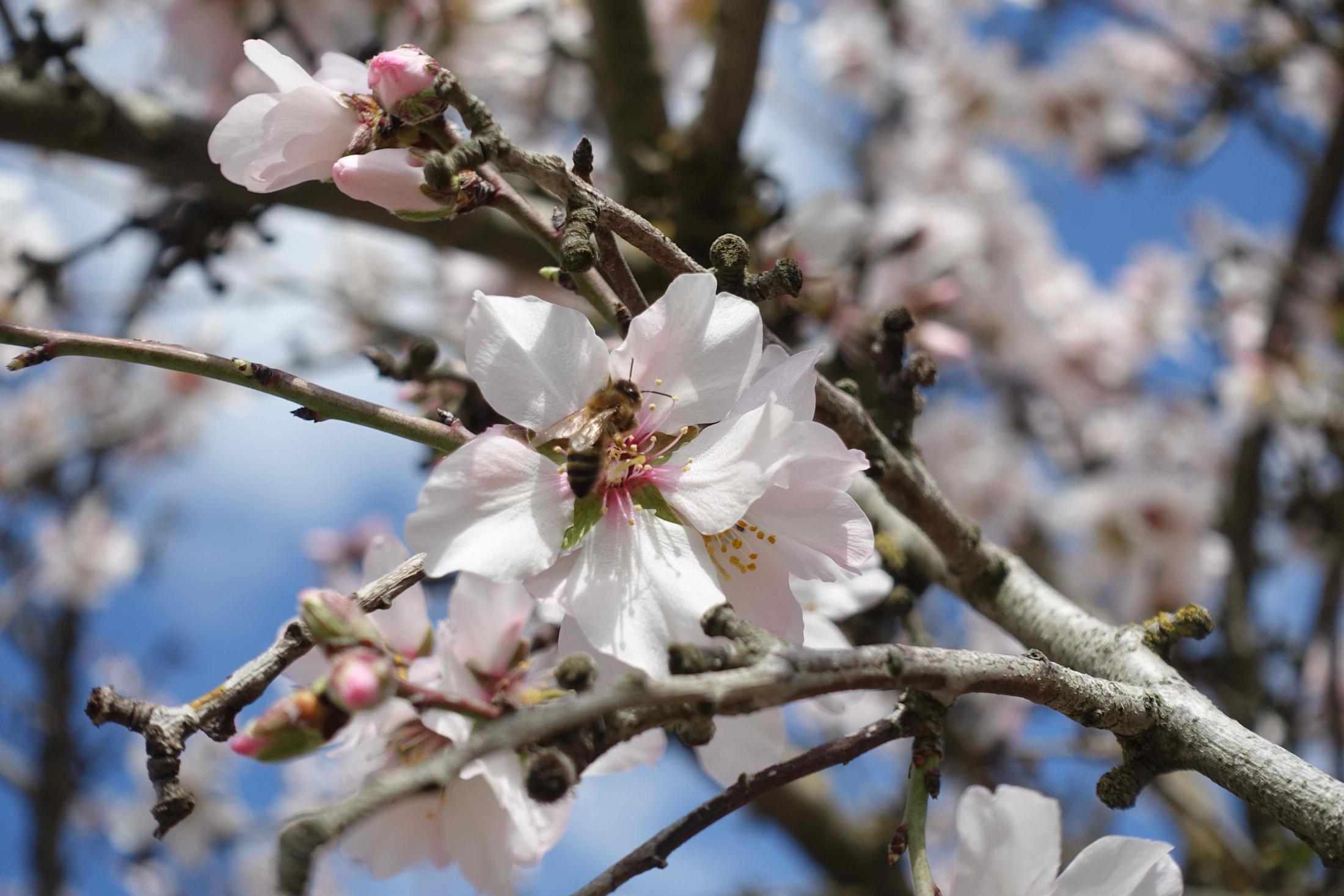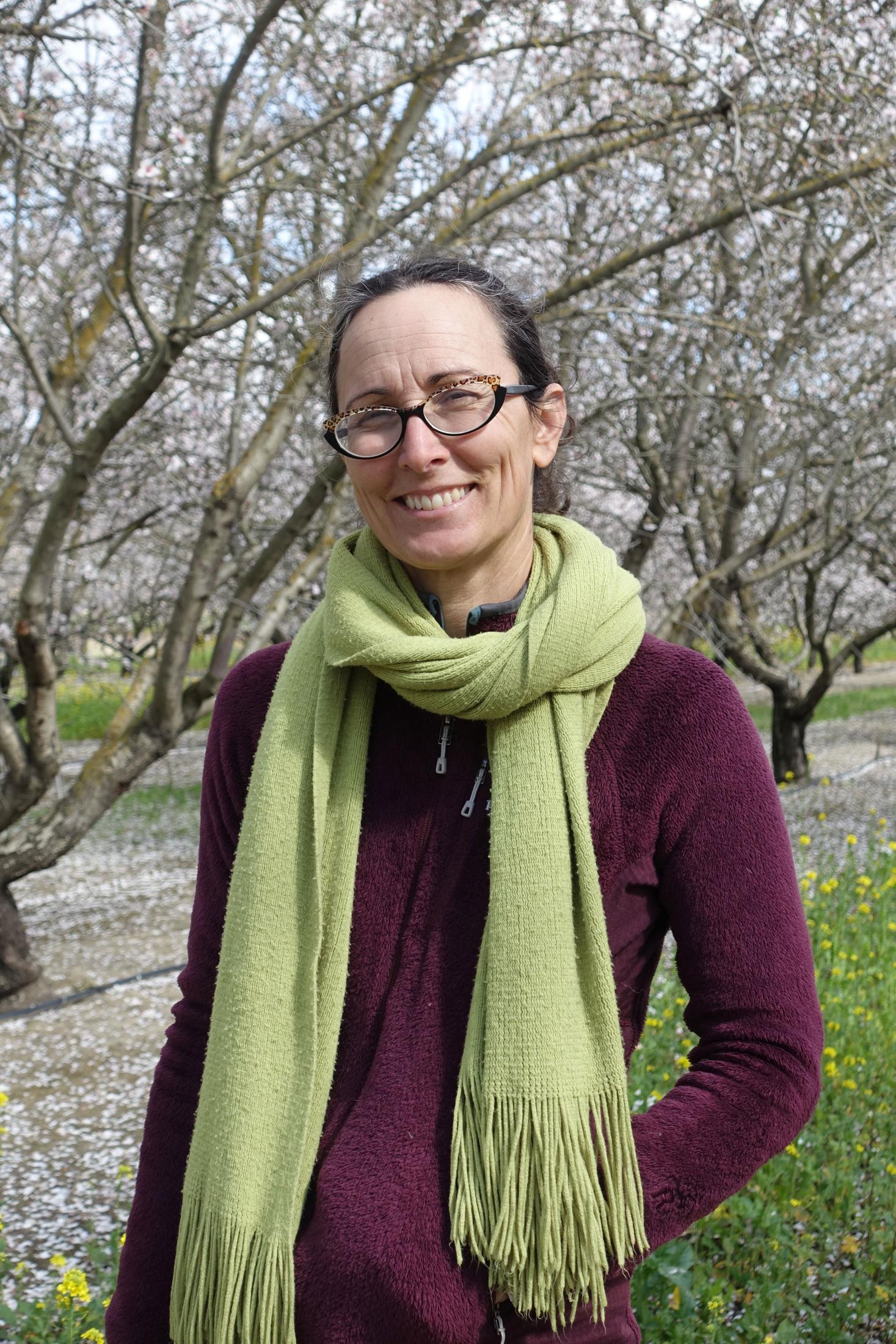 Christine Gemperle and her brother Erich farm 135 acres of almonds in Ceres (Stanislaus County). In December 2018, she tried whole-orchard recycling for the first time on a 20-acre block. The land will be replanted with potted trees in Fall 2019 after a 9-month fallow, during which Gemperle has been applying chicken manure to help break down the wood chips. In the long term, she hopes to improve the water-holding capacity of her Hanford sandy loam.
Christine Gemperle and her brother Erich farm 135 acres of almonds in Ceres (Stanislaus County). In December 2018, she tried whole-orchard recycling for the first time on a 20-acre block. The land will be replanted with potted trees in Fall 2019 after a 9-month fallow, during which Gemperle has been applying chicken manure to help break down the wood chips. In the long term, she hopes to improve the water-holding capacity of her Hanford sandy loam.
Grower's name: Christine Gemperle (pron. GEM-per-lee with G as in “get”)
Location: Gemperle Orchards, Ceres, CA (Stanislaus County)
Total almond acreage: 135 acres
Acres and years recycled: Recycled 20 acres in December 2018; not yet replanted
Motivation
The last time Christine and Erich Gemperle had to remove an orchard, back in 1998, it didn’t cost them anything: a firewood company cut and removed the trees, chipped the brush, and sold it to a cogen plant – all free of charge. Times have changed. The firewood market is saturated, there are few options for cogen contracts in the north Valley, and burning exacerbates air quality problems. So Christine was looking for another option.
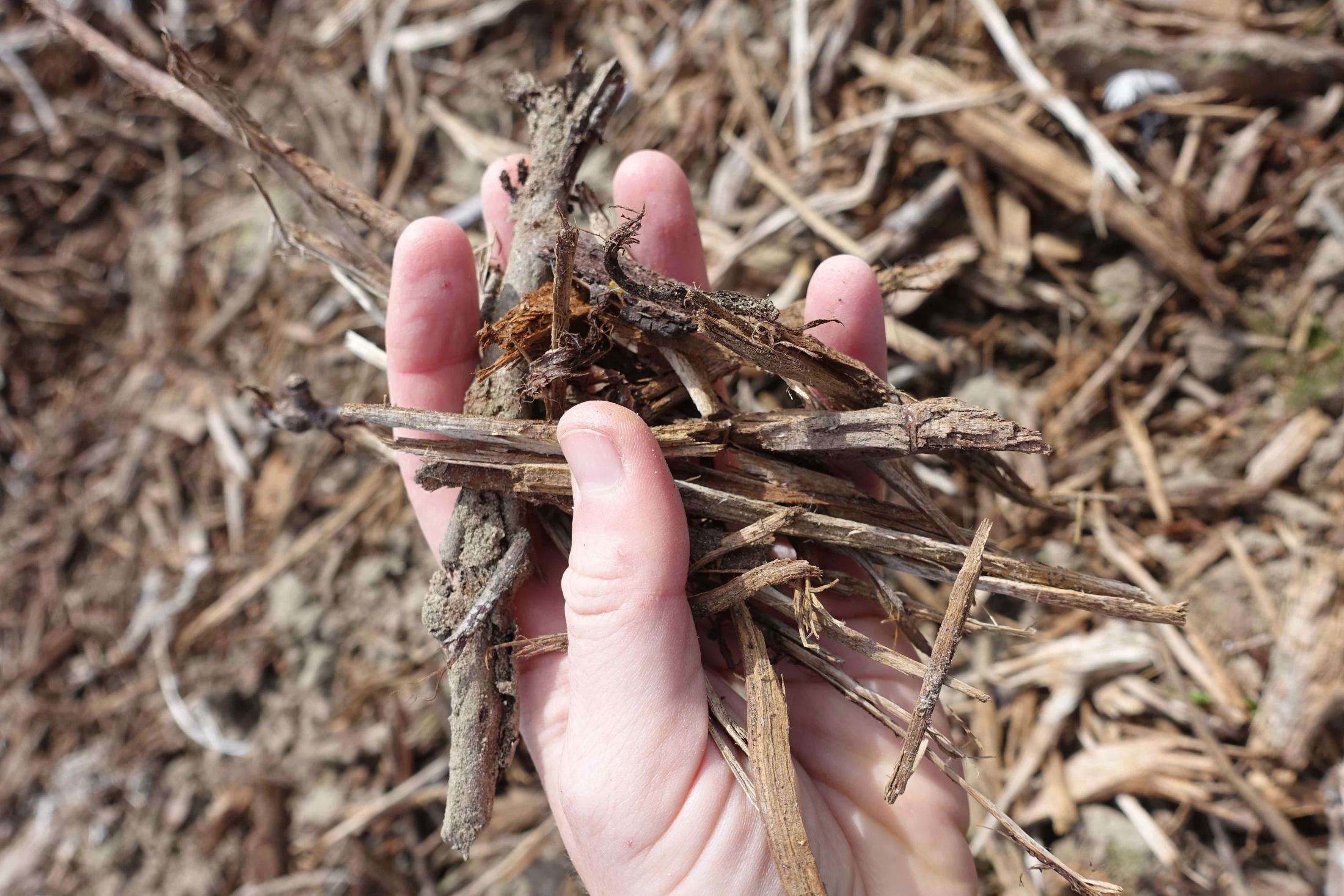
Having heard about whole-orchard recycling from UC Cooperative Extension and from the Almond Board (where she serves on the Biomass Task Force), she was excited to try it. Does she anticipate any benefits? “Mostly soil health,” she says. “Seems like a no-brainer that it would be good for the soil.” She adds that “Because it’s sandy loam, it drains so quickly; I’d like to increase my soil moisture holding capacity.” It is hard to really change the soil, she adds, but she is in this business for the long haul.
Logistics of orchard removal and replanting
The removed 20-acre orchard was a mix of almond trees of different ages, ranging from 22 to 58 years old. “There were a lot of big boys in there,” Gemperle says. Even after spreading chips on 4 acres’ worth of roads, paths, landscaping, and parking lots, there were still enough chips left to cover the 20-acre orchard to a depth of two inches.
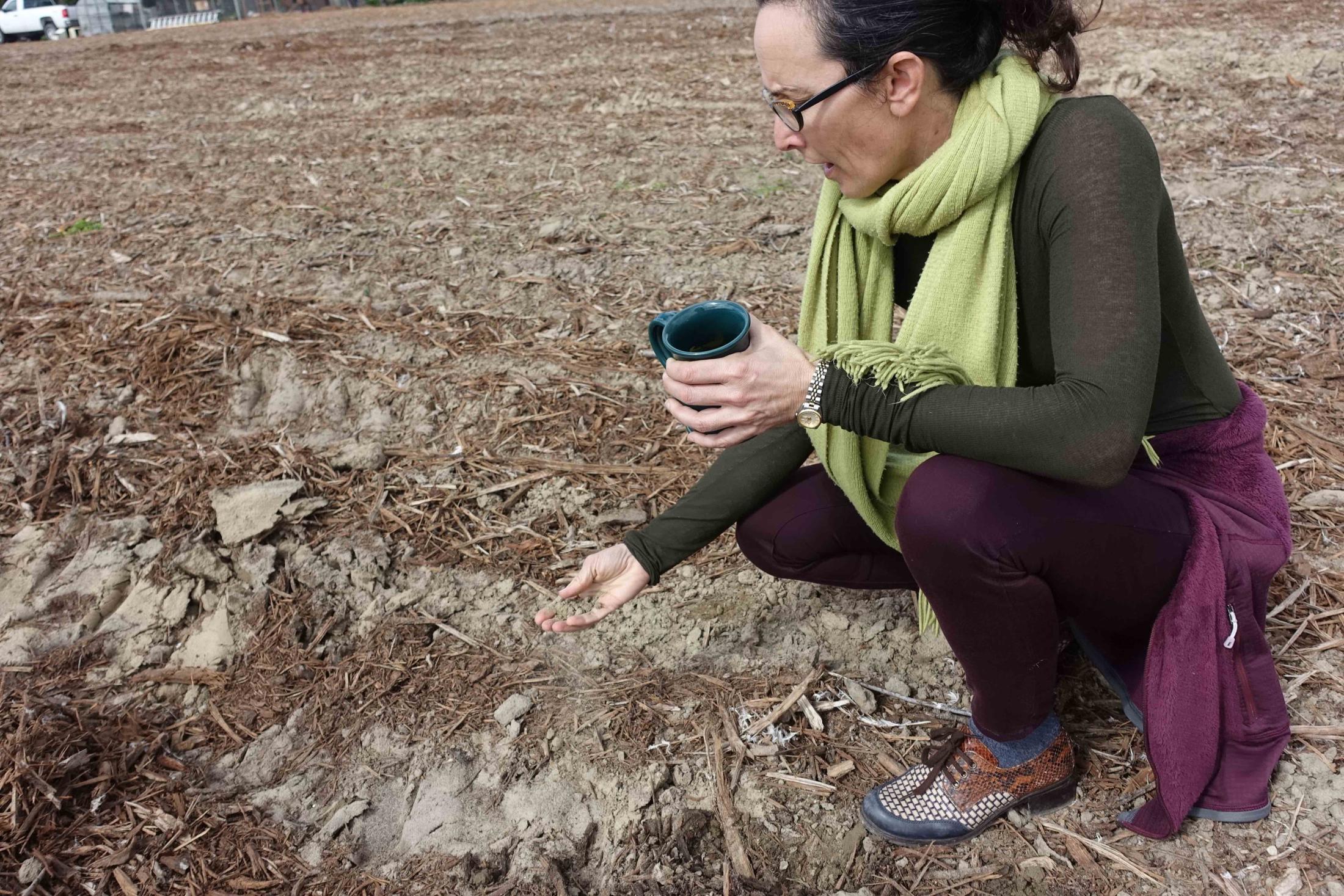
The orchard removal company pulled and ground the trees ($700 per acre) and then spread them ($200 per acre). Gemperle is doing all the land preparation herself – both to reduce costs, and to do a thorough job according to her own timeline.
The chips are 4-6” long and less than an inch thick (see photo). For the two months that the chips were on the surface, Gemperle applied liquid chicken manure to help them break down. She then plowed them under with a moldboard plow, deep ripped, and disked – pulling out any large roots that were unearthed after each step. She is planning to do one more round of manure, disking, and root removal before finally doing land leveling and fumigating in time for a Fall 2019 planting with potted trees.
Nitrogen application following WOR
Gemperle will replant the 20-acre block in Fall 2019 with potted trees. She has been working with Roger Duncan (UCCE Stanislaus County) to devise a proactive fertilization regime for her recycled orchard,
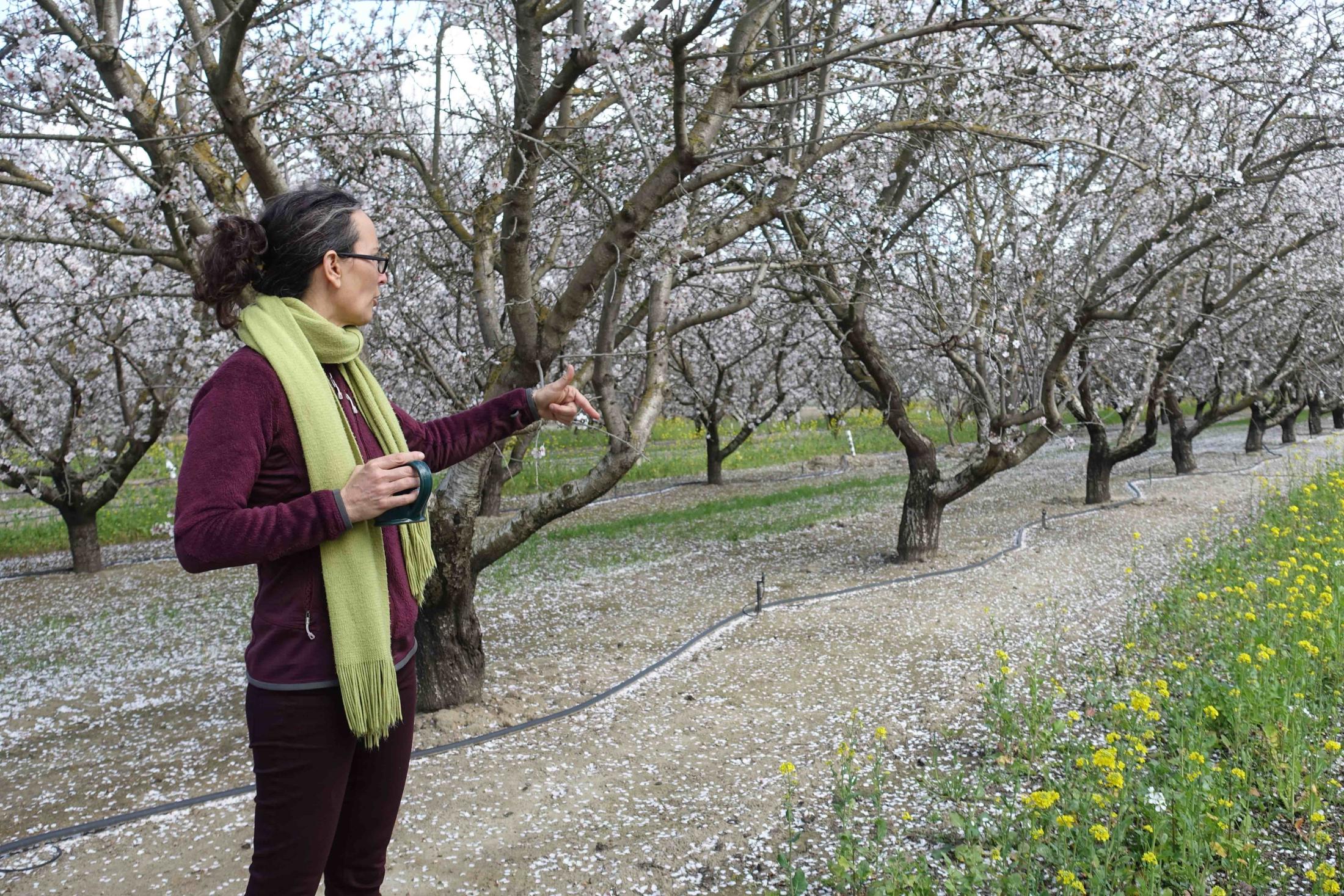
taking into account the chicken manure that is applied during the fallow.
She takes this planning very seriously: “A stunted orchard will follow that pattern for the life of the orchard,” she says. “If you screw it up, you’ll have issues the entire life of that orchard.”
She intends to plant cover crops in the new orchard (alternating rows of mustard and clover), not only to help break down the wood chips, but to achieve other goals such as better pollinator health and improved soil texture.
What went well and what to change next time
So far, everything has gone according to plan. “My biggest worry,” says Gemperle, “was the contractors being timely and getting the work done when we needed the work done.” After hearing about other growers’ experiences with overbooked orchard removal companies not showing up as promised, she chose to relax the timeline by fallowing the land for nine months until the subsequent fall.
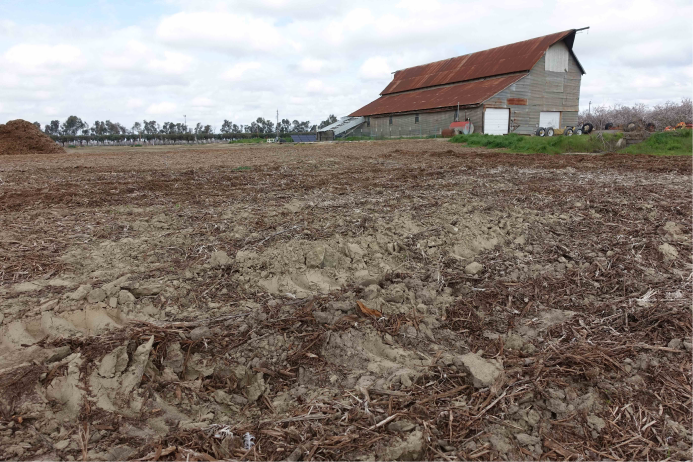
This approach has the added advantage of allowing more time for the chips to break down.
Advice to fellow growers considering WOR
Gemperle would recommend orchard recycling to other growers. “You’re encountering some additional work,” she agrees, “but it’s hard to point to anything obviously bad about it.” She believes that the practice is not only a clear win for the environment, it will likely pay off in the long run with improved soil and more resilient trees.
She expects that economic and policy changes will make orchard recycling inevitable in future decades. In her view, avoiding the practice to save money in the short-term may lead to “scrambling at the very end.” Gemperle sees her decision to proactively adopt whole-orchard recycling as a way to reduce her production risk, not increase it. “Farming has so much uncertainty as it is,” she says. “I don’t want to add any more!”
